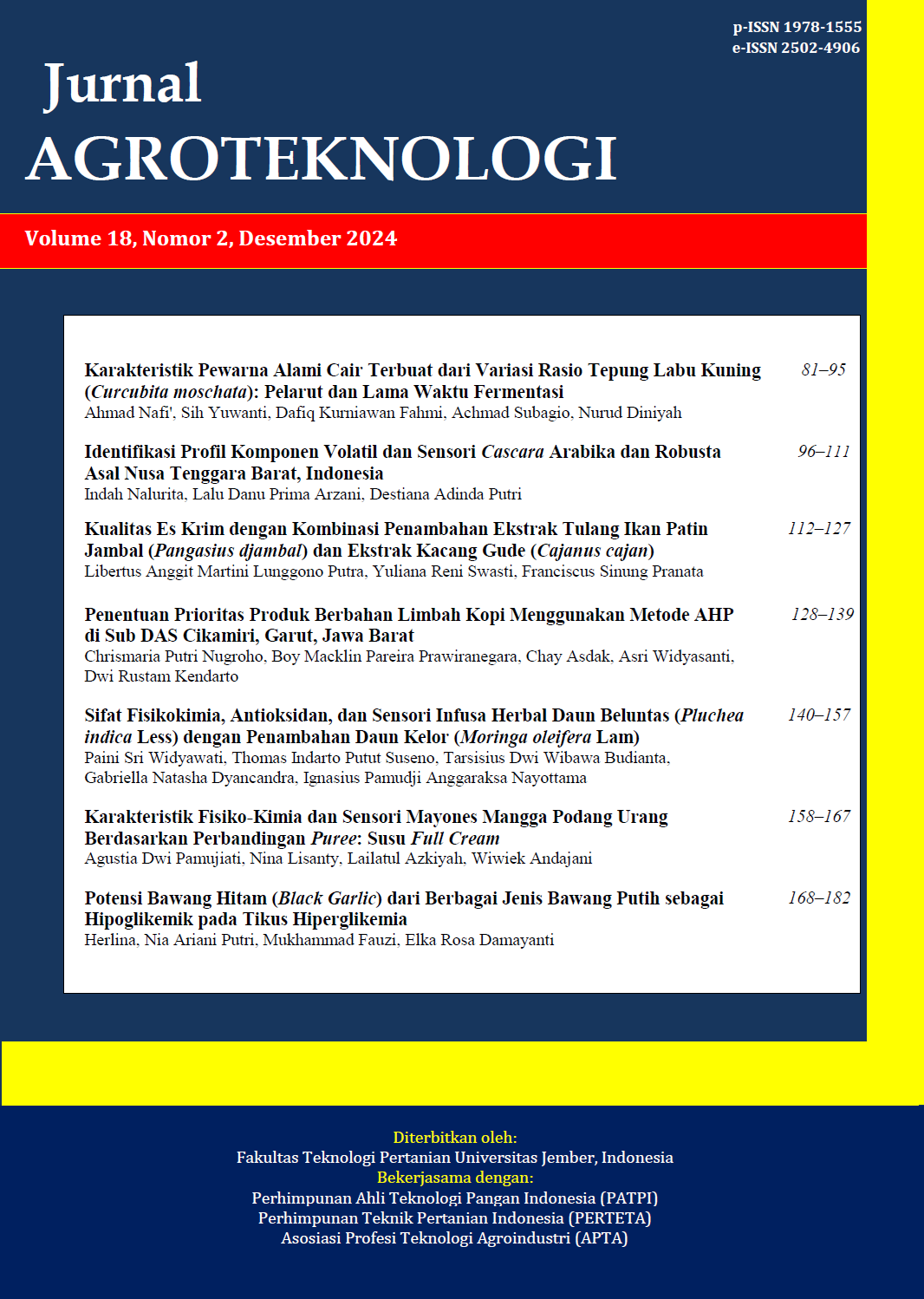Potensi Bawang Hitam (Black Garlic) dari Berbagai Jenis Bawang Putih sebagai Hipoglikemik pada Tikus Hiperglikemia
The Potential of Black Garlic from Various Types of Garlic as Hypoglycemic in Hyperglycemic Rats
DOI:
https://doi.org/10.19184/j-agt.v18i2.53728Abstract
Free radical compounds in the body are very reactive to cells, so they can cause various diseases, one of which is diabetes mellitus. Compounds that are able to ward off free radicals are called antioxidants. Black garlic are known to contain bioactive compounds including SAC (S-allyl cysteine), polyphenols, and flavonoids which can treat diabetes or hyperglycemia. This research on black garlic as a hypoglycemic aims to determine the potential of black garlic from various types of garlic and types of black garlic which have the most potential as hypeglycemic in hyperglycemic rats. In vivo testing was carried out by inserting groups of rats in each cage (20–25°C) after being fed and drinking ad libitum. Each group of hyperglycemic rats was treated with black garlic from honan garlic, green spices, and lanang garlic at a dose of 250 mg / 200 g BW per day. Examination of tested animals includes body weight, hypoglycemic effect testing, blood glucose response testing, and malondialdehyde (MDA) levels. The results showed that black garlic can reduce blood sugar levels by 54.7%, blood glucose response by 1.25%, and reduce MDA levels by 72.98%. Honan black garlic can reduce blood sugar levels by 52.6%, blood glucose response by 12.29%, and reduce MDA levels by 68.87%, while green spiced black garlic can reduce blood sugar levels by 43.33%, blood glucose response was 37.67%, and decreased MDA levels by 59.76%. The type of black garlic that has a higher potential to reduce blood glucose levels in hyperglycemic rats is lanang black garlic.
Keywords: antioxidant, black garlic, hypoglycemic, lanang black garlic
Downloads
Downloads
Published
Issue
Section
License

This work is licensed under a Creative Commons Attribution-ShareAlike 4.0 International License.
Jurnal Agroteknologi has CC-BY-SA or an equivalent license as the optimal license for the publication, distribution, use, and reuse of scholarly work. Authors who publish with this journal retain copyright and grant the journal the right of first publication with the work simultaneously licensed under a Creative Commons Attribution-ShareAlike 4.0 International License that allows others to share the work with an acknowledgment of the work's authorship and initial publication in this journal.









.png)
